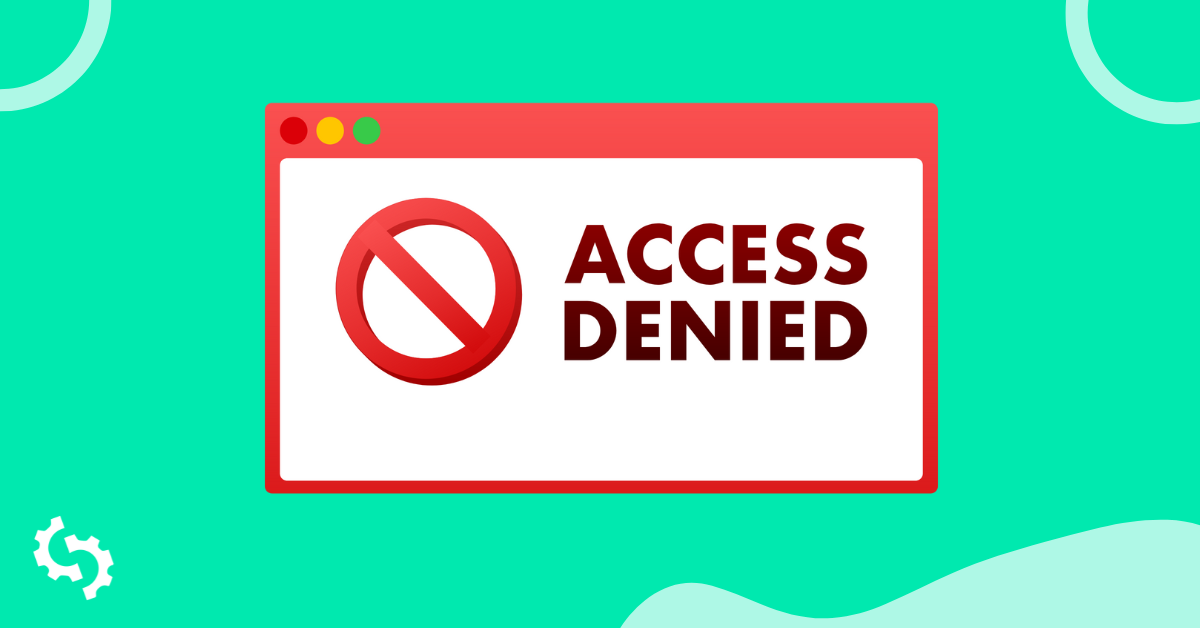.png)
Why is my website not ranking?
Nine times out of 10, the answer to that question can be attributed to one (crucial) component of SEO:
Link building.
Let's be honest, most of the other major SEO components—like keyword research, on-page SEO, meta tags and indexing—while time-consuming, aren't too difficult to incorporate.
But building links to your site (especially high-quality ones)?
That's a whole different beast.
So if you're still struggling to rank on Google after doing all the stuff recommended in the latest SEO guides, this post should help.
In it, I'll give you six link-based answers to why your website might still not be ranking in search engines.
Let's get started.
Answer #1: You Don't Have Enough Backlinks
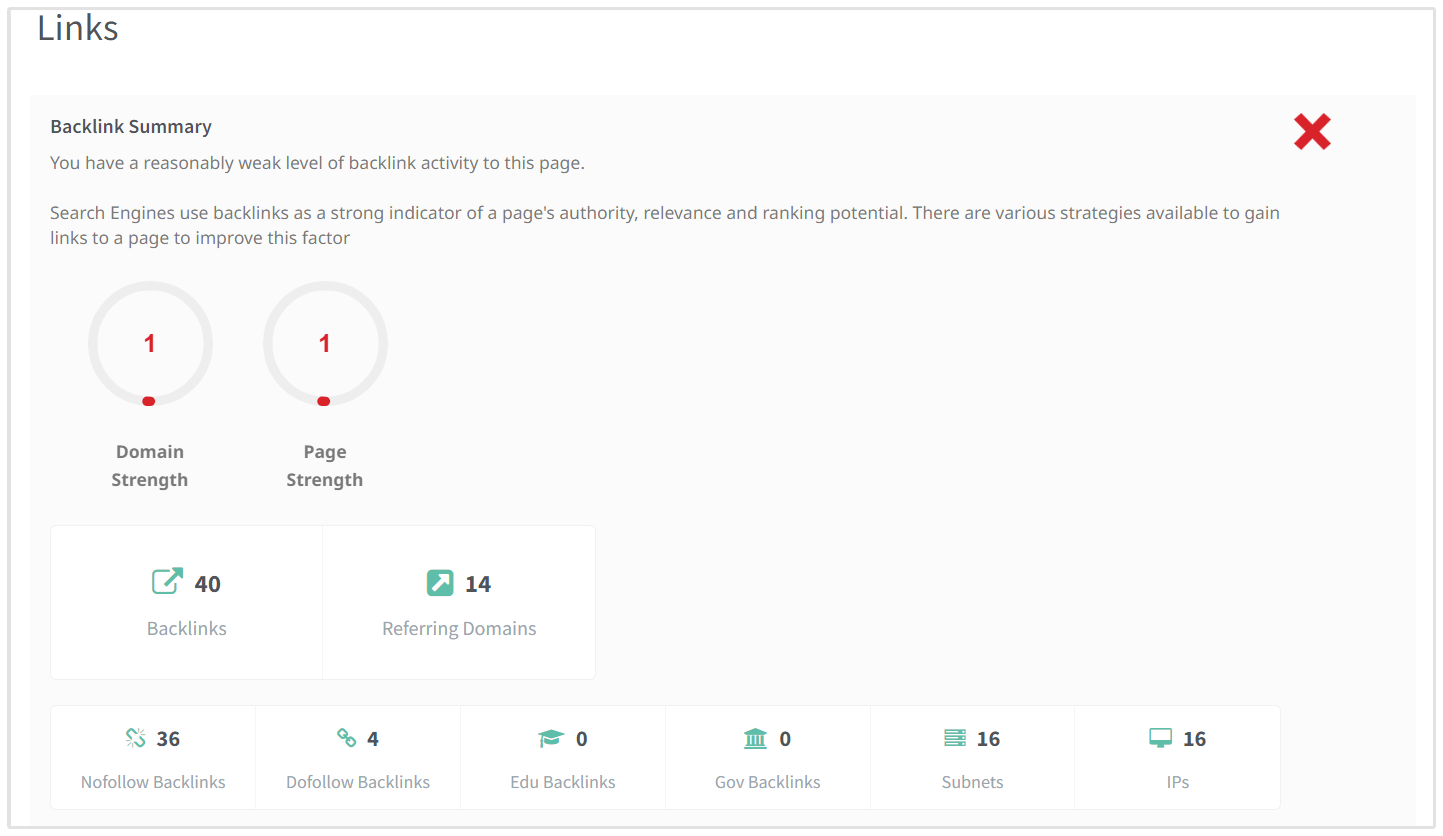
SEO is ultimately a popularity contest.
To rank higher than your competitors, you need to have more and better backlinks than them. It's really that simple.
Look at it like this:
A backlink is a "vote of confidence" telling search engines that the page it's linking to is valuable.
So, generally speaking, if a page has more "votes" than another page, it will outrank that page in search results.
(Of course, several other factors come into play. But for simplicity's sake, we'll leave it at this for now.)
What this means for you is that if your site isn't ranking in Google (but it's optimized for your target keyword), then you most likely don't have enough backlinks pointing to it.
Ergo, you need more backlinks.
But first things first:
Remember how I mentioned earlier that each backlink is like a "vote of confidence" for your site?
Usually, when you vote on something (like an election), each vote carries equal weight.
That's not the case when it comes to backlinks.
Each backlink your site receives has its own perceived value. Some backlinks will help your site tremendously while others could actually hurt it.
So your goal when getting more backlinks is to focus on two key areas: quality and quantity.
Quality
Quality backlinks will give your site the most perceived value.
In some cases, one high-quality backlink can give you the same amount of link juice as hundreds of low-quality backlinks.
So it goes without saying that just a handful of quality backlinks can have a very big impact on your rankings.
But they're also more difficult to get.
So be prepared to put in some legwork to acquire these types of backlinks.
Two of your best strategies for earning high-quality backlinks are:
1. Publishing unique and valuable content. Creating content that's uniquely your own, thoroughly researched, well-crafted, valuable and actionable. And then promoting that content via all of your available channels.
2. Guest blogging. Creating the same type of content as above but publishing on other top industry-related sites that will provide a valuable backlink back to your own site.
Quantity

A site's number of backlinks has been an important ranking metric for Google since its inception.
In Google's eyes, the more natural backlinks a site has, the better the chances that site will add value to people who visit it.
So Google will tend to rank it higher in search results.
In a perfect world, your portfolio would be filled with hundreds of high-quality backlinks. But in the real world, that simply won't be the case.
When you focus on acquiring a higher quantity of links, quality will drop as a result.
Don't fret over it, though. Because remember, even lower quality links still count as a "vote" for the viability and worth of your site.
Over time, these backlinks will add up and you'll notice a significant increase in rankings.
What's the best way to get more backlinks to your site in a relatively short amount of time?
Running a link popularity campaign.
This is a link building campaign where you solely focus on increasing the number of links pointing back to your site and typically involves link building strategies like:
- Forum and comment posting
- Infographic creation
- Industry-related blog directory submission
To understand the ins and outs of running a link popularity campaign, I recommend you take a look at this post that I wrote on the topic.
Answer #2: You Have Too Many Unnatural and/or Spammy Backlinks
.png)
Without a doubt, unnatural and spammy backlinks are one of the biggest reasons why sites are penalized or de-indexed on Google.
To put it bluntly: Google hates spam.
And they're quick to place guilt by association. Meaning that if you have spammy sites linking back to your site, then they'll assume that your site is spammy or low-quality as well.
At the end of the day ...
If you have spammy links pointing to your site, you need to get rid of them as soon as possible.
In order to do that, you need to know how to do two things:
- Identify and locate spam backlinks
- Remove spam links from your backlink portfolio
How to Identify and Locate Spam Backlinks
Google identifies spam links (what they call "link schemes") as:
"Any links intended to manipulate PageRank or a site's ranking in Google search results:"

They then go on to list out several examples of sources for spam links.
You can view the entire list here. But for now, I'll list some of the most common spam link types below:
1. Paid Links That Pass PageRank
What Google means here are followed links that you pay someone to place on their site.
(It's worth noting here, that paid nofollowed links—links that don't pass PageRank—are acceptable according to Google. But I urge caution if you consider using this strategy to drive traffic.)
But I'd extend that definition to include paid services that promise hundreds of backlinks to your site.
Here's why:
These "services" create backlinks that almost always fall within Google's spam violation guidelines.
In other words, the links they point back to your site are themselves spammy and will most likely result in a violation of Google's spam guidelines and a penalization to your site.
2. Links From Low-quality Directories and Bookmark Sites
These are links that originate from irrelevant and low-quality online directories.
Directories of this type often accept any link that's submitted to them and exist for the sole purpose of creating followed links back to the parent site.
But not all directories are bad. Some can actually provide you with very valuable backlinks.
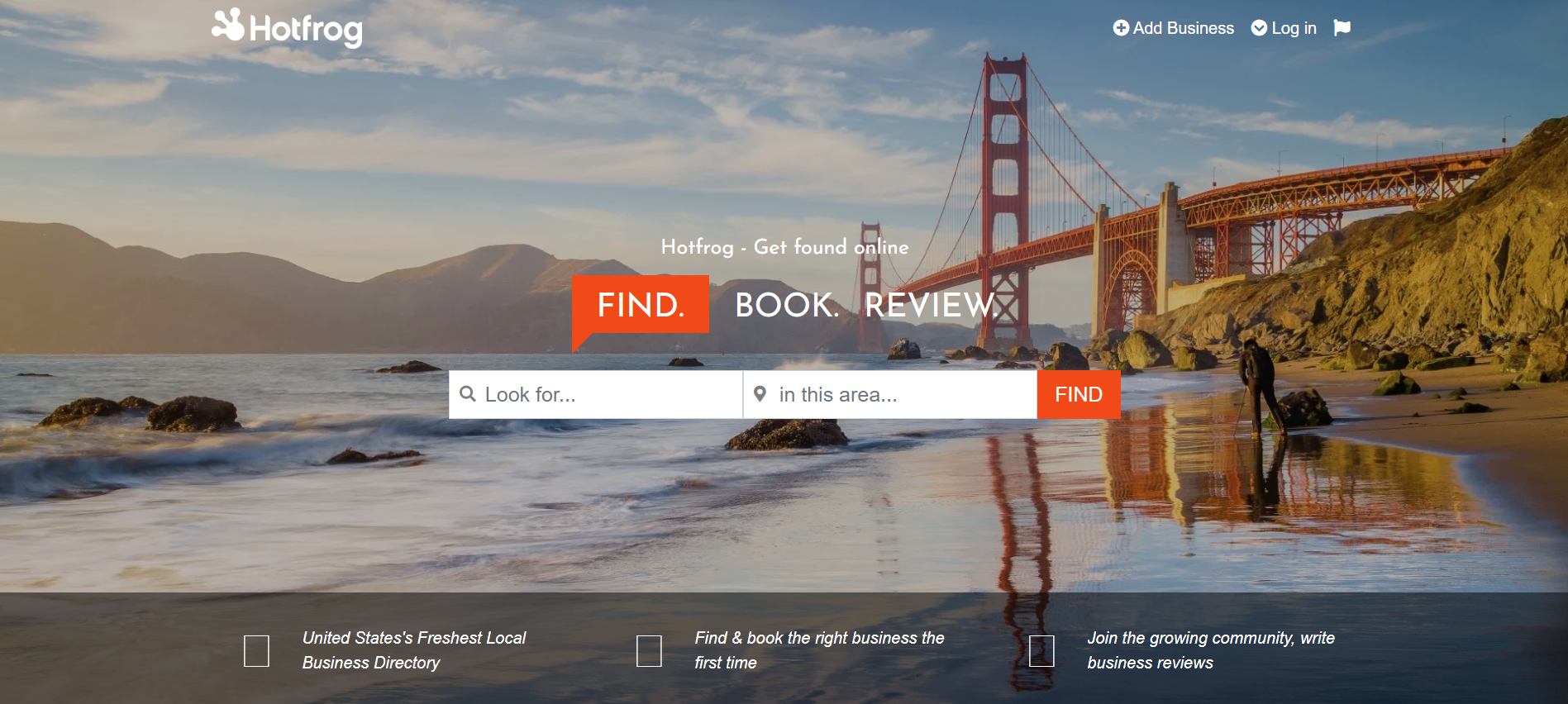
When submitting to a directory, you want to make sure it meets the following:
- Has a good online reputation
- Uses an approval process for accepting new links
- Has an editorial team that reviews and edits submissions
- Optional: Is specific to your site's niche or industry
3. Links With Optimized Anchor Text
These are links found in content that are loaded down with exact-match anchor text (text that matches the target keyword).
Google provides an example of what this can look like:
This type of link spam often accompanies thin content—content that's poorly formatted and filled with misspelled words, poorly spun content and lack of depth.
How to Remove Spam Backlinks
While it's possible, it's extremely time-consuming and tedious to try and find spam backlinks without the assistance of software.
That's why I highly recommend, if nothing else, you sign up for SEOptimer to take stock of your existing backlinks.
Without it, you'll have to manually research every single backlink to your site. (Good luck with that!)
SEOptimer uses several different metrics to identify and clearly define spam backlinks
To cover them all is outside the bounds of this post.
But I will direct you to two insanely useful guides that will show you everything you need to know to identify bad backlinks:
- How to Identify Bad Backlinks That Drag Your Rankings Down
- The Penalty Box: 5 Types of Google Link Penalties to Avoid at All Costs
Now, once you've located the spammy backlinks, you'll want to remove them from your backlink portfolio.
You ultimately have two options for doing this: Request a removal or disavow the link.
Asking the site owner to remove the link should always be your first choice.
But if that doesn't work, then disavowing the link is your next best bet.
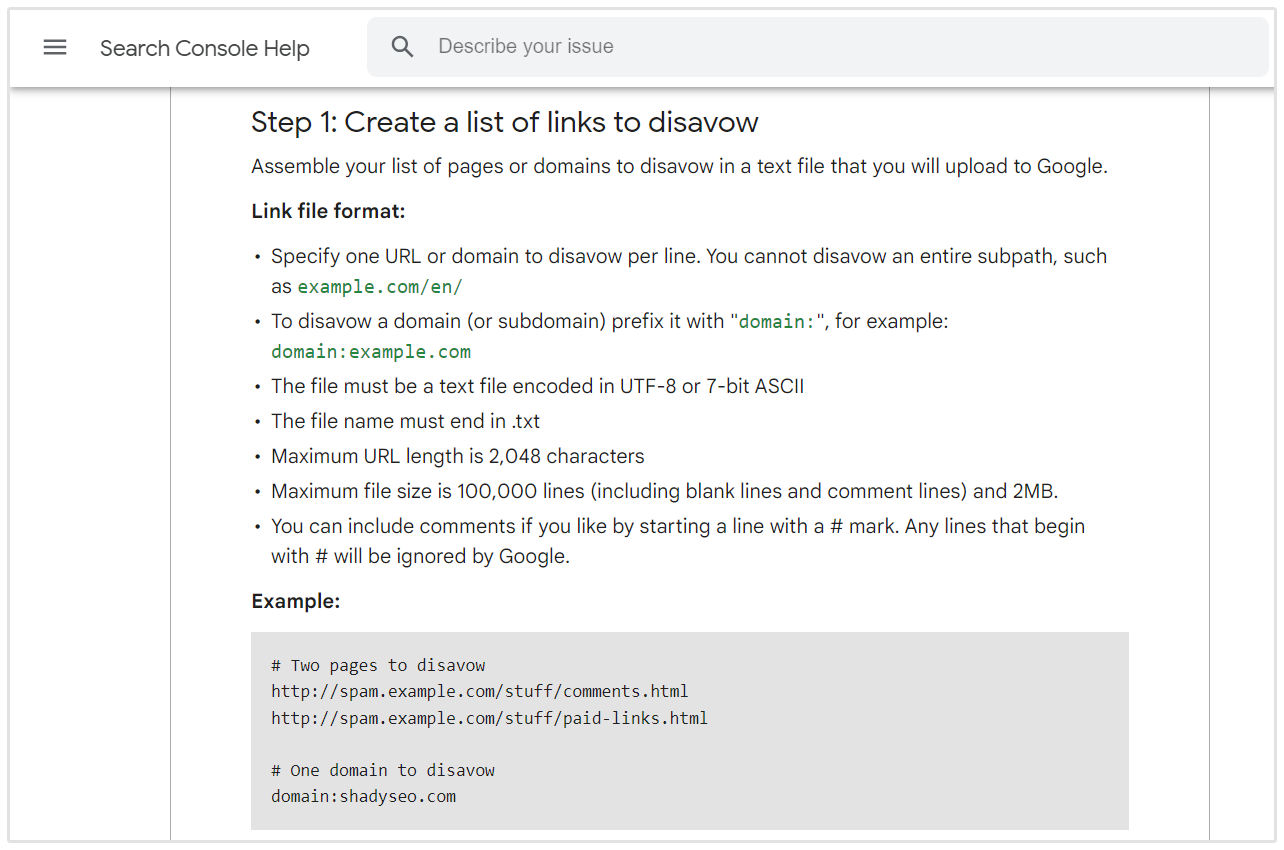
I previously wrote an in-depth guide on disavowing backlinks that will show you:
- How to properly ask a site owner to remove a link, and
- The correct way to disavow backlinks
You can check it out here.
Answer #3: You Have Too Many Backlinks from Foreign TLDs
So here's the thing:
Technically speaking, links from foreign top-level domains (TLDs) aren't spam.
But, depending on where your own TLD is located, Google may still treat them as such. Especially if there are hundreds of them linking to your site.
Why's that?
My belief is that Google finds it difficult to explain the validity of why a site would have several different foreign language-speaking TLDs linking to it if the site is in a completely different language.
(This could change in the future, thanks to rapid advancements in translation technology. But as it stands now, too many backlinks from foreign TLDs can hurt your rankings.)
So if you have an abundance of foreign TLDs linking to your site, it'd be wise for you to consider removing them from your backlink portfolio.
To find out if you do have foreign TLDs (and how many), just go to the Backlink Research module and find the TLD tab:
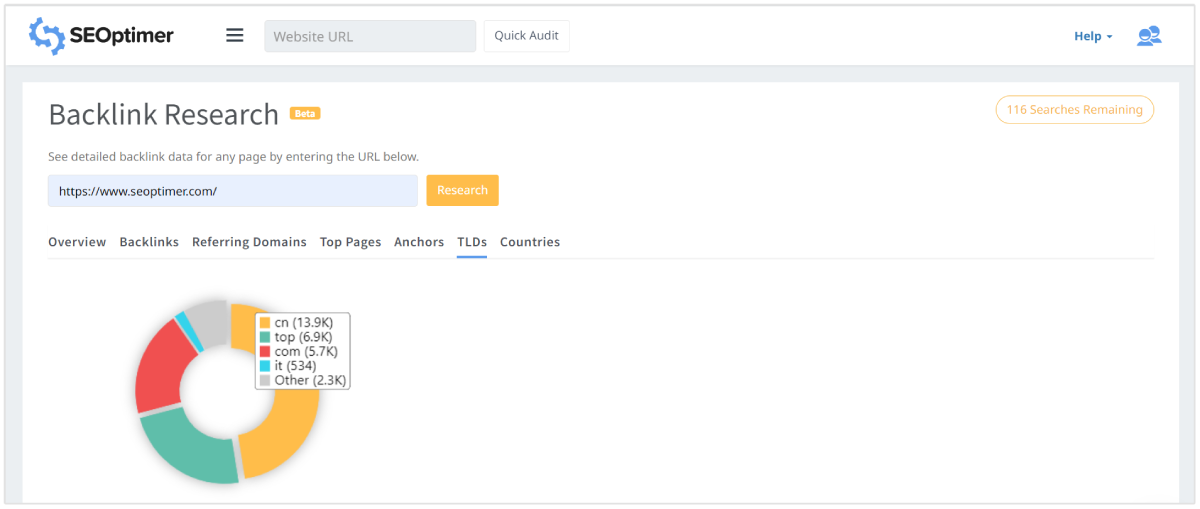
If the TLD has a flag that's different from your own country's, then it's coming from a foreign TLD.
Answer #4: You Don't Have Enough Followed Backlinks
All backlinks in existence, regardless of quality, fall under two main categories:
- Followed
- Nofollowed
Followed links are links that Google considers when deciding where and how to index your site or page.
Nofollowed links are links that Google does not consider when ranking a site or page. They completely ignore these links.
So it goes without saying that if your backlink portfolio is full of nofollowed links, then you're going to have a tough time ranking your site on Google.
Followed links should always be your main goal when running any type of link building campaign.
Nofollowed links should occur only as a natural byproduct of followed-focused link building.
How to Find Your Followed and Nofollowed Backlinks
How do you know how many followed and nofollowed links you currently have?
The simplest and quickest way to check is to use SEOptimer's Backlink Research module.
While you're on the module, take notice of the numbers under the Follow and Nowfollow headings:

Answer #5: You Don't Have Enough High-Quality Backlinks
Earlier I told you that your backlink campaigns should focus on both quality and quantity.
Well, most marketers just starting out tend to focus only on quantity.
And I get it.
Their rationale behind it is this:
"If my top competitor has 300 backlinks, then I should be able to outrank them if I get 310 backlinks."(And back in the early 2000s, that was actually a viable strategy.)
But, thankfully, times have changed and Google places much more emphasis on giving their users helpful and valuable search results with their queries.
And one of the main ways they do that is by focusing on the quality of the links pointing back to a site or page.
So if your site has more backlinks than your competitors but you're still not ranking on Page One for your target keyword, then the culprit is most likely your site's lack of quality backlinks compared to your competitors'.
In other words:
You need to change gears and focus on getting some backlinks from authoritative, top-tier sites related to your site's industry.
A few key strategies I recommend for doing this are:
The Skyscraper Technique
This technique involves three main steps:
1) Researching the top results for your target keyword, 2) Creating a piece of content that's more valuable and more in-depth than those top results, and 3) Publishing and promoting that content to key influencers in your industry.
(You can learn more about the Skyscraper technique and how to implement it from this post.)
Broken Link Building
Broken link building involves finding links on high-authority sites that currently lead to dead or out-of-date pages, either locating or creating a piece of content on your site that will serve as a better alternative for the site to link to, and then reaching out to the site owner to request that they link to your page instead.
(Here's a useful guide you can read to learn more about broken link building.)
Testimonials
Testimonials can score you some easy high-quality backlinks.
What you do is find industry-related product and service providers, either purchase their product or service or ask for a review copy, use it and write an engaging review and send the review back to the provider. They'll often post the review on their site with a backlink.
Infographics
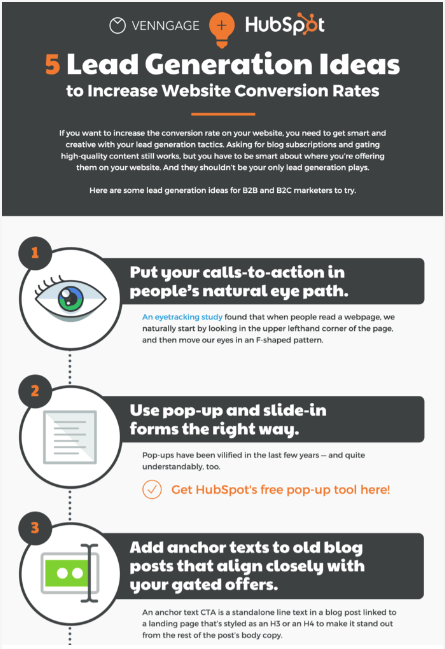
Well-made infographics can attract tons of high-quality backlinks. And they're not as difficult to create as you might think.
The most effective infographics are ones that:
- Focus on a subject important to your industry
- Are filled with useful data and statistics
- Include a written summary in addition to the infographic
Here's an example of an effective infographic on web design trends from Medium.
And don't worry about design. You can use free online software like Canva to create great-looking infographics with relative ease.
Answer #6: You Don't Have Enough Relevant Backlinks
Even high-quality backlinks suffer from not being relevant to your site.
Google wants to see industry-related sites linking back to your own. If they don't, then the backlinks won't carry near as much weight.
For example:
Let's pretend you have a site that's all about knitting. And let's say, by some form of divine miracle, your knitting site receives a backlink from a post on ESPN.com.
Even though you've scored a backlink from a very high-authority site, you most likely won't receive the full amount of link juice that it would normally supply.
And that's because sports-related news has virtually zero in common with the hobby of knitting.
But take that same ESPN link and point it to a small basketball-related site, then all of a sudden you have a potentially game-changing backlink.
The moral of the story?
You should always be targeting relevant sites with any link building campaign you run.
You can make sure you're doing this by:
- Finding and cataloging sites that are related to your niche
- Creating valuable industry-related content that your peers will want to link to
- Guest blogging on industry-related sites
How to Easily Track Your Website's Rankings
![]()
There's just one more thing we need to cover before ending this post.
How do you keep track of your website's rankings on Google so you know where you stand?
SEOptimer will do this for you automatically.
All you need to do is add the keyword you want to track and SEOptimer will take care of the rest.
Now It's Your Turn
I just gave you six link-based answers for why your website isn't ranking.
I encourage you to study these answers and discover which ones are currently affecting your rankings.
Start from Answer #1 and work your way down to Answer #6:
- Focus on getting more backlinks in the beginning
- Remove or disavow any unnatural and foreign TLDs that could hurt your rankings
- Make sure the majority of your links are followed
- Focus on acquiring more relevant, high-quality backlinks
While you're building your backlinks, use SEOptimer to keep track of your backlinks (Backlink Research module), monitor your search results progress (Keyword Tracking module), and uncover new link building opportunities (Backlink Monitoring module).
Make no mistake, this will take time. You won't soar to the top overnight.
But with a healthy dose of patience and smart, diligent work, the results will come.



